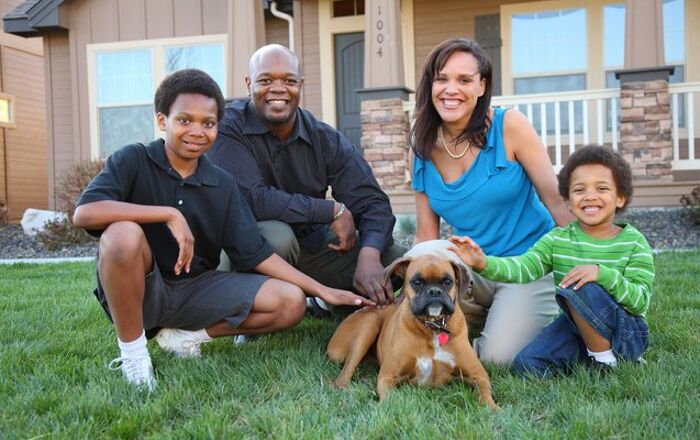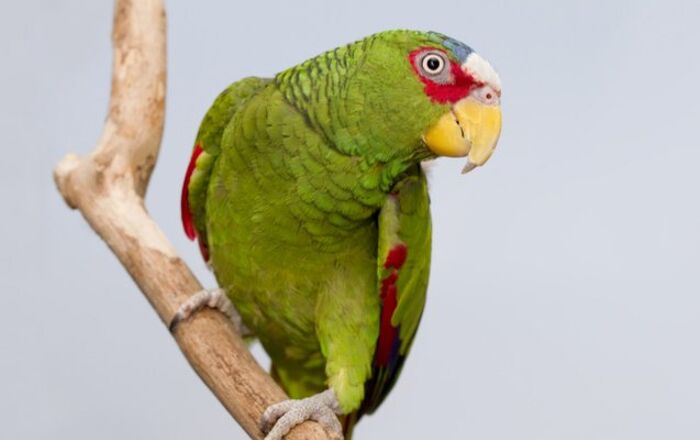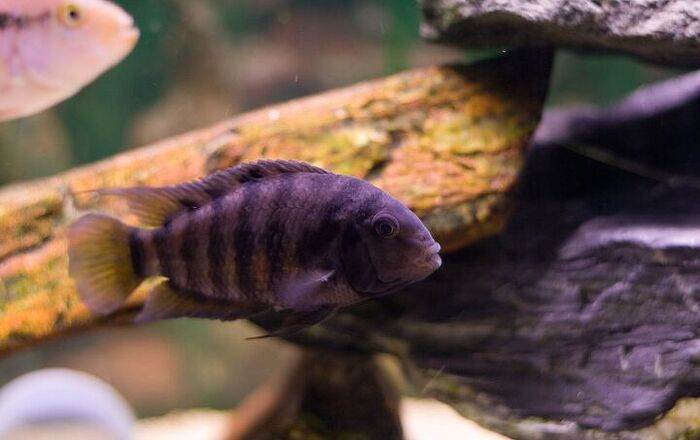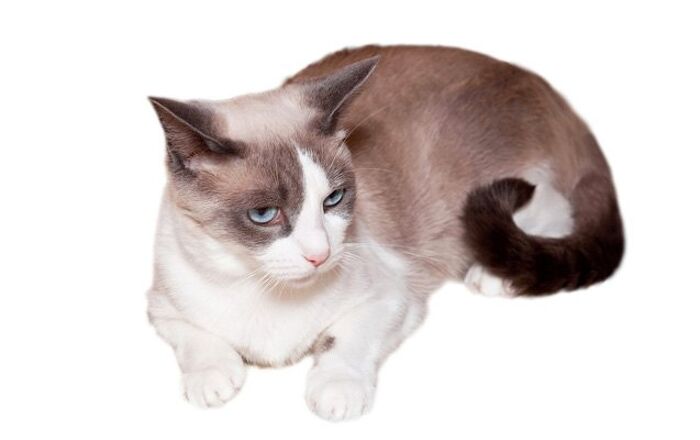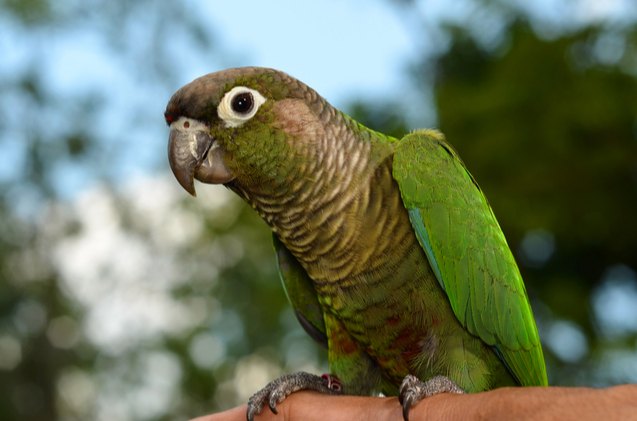
Green Cheeked Conure General Info
These peculiar little conures are loved pets and they bring a world of fun with them to your home. Sharing many similarities with some of the more common and popular conures, they are equally silly but much more tempered and calmer. That’s why it’s often said that with their great mix of traits, these little parrots make excellent pets and companions. A popular pet for young people, this parrot is a great choice if you’re looking for a friend to regale you and put a smile on your face.
Cute, friendly and tiny, these lovely-looking conures make great pets and companions.
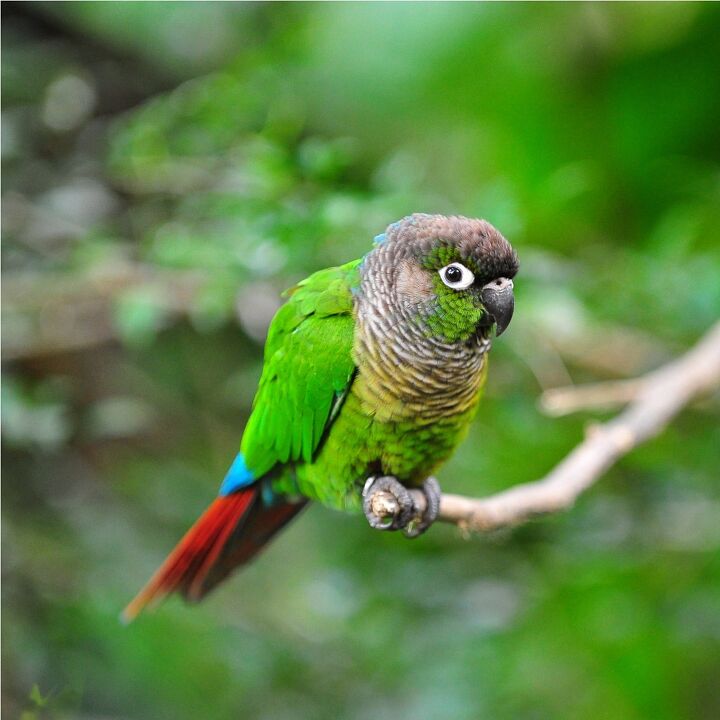
Native Region/Natural Habitat
The often humid and tropical forests of South America are the home for these little fellows. More precisely, their habitat includes small parts of Brazil, Paraguay, Argentina, and Bolivia. They are fairly common and their numbers are great which gives them a rising popularity as pets. They form flocks of up to 20 birds and nest in tree canopies and close to a fresh water source.
Overall Description
Although they might not appear small at a first glance, these conures are really not that big. The adults reach an average length of about 10 inches (26 centimeters), but a great part of this is taken up by their lovely and long tail feathers. And with this small stature and a weight of just 3 ounces (80 grams), a little bit of extra attention wouldn’t be a bad idea – they could be frail.
Males and females are completely identical. It’s best to choose a unisex name for your pet- unless you’re a good guesser!
Speech and Sounds
The speech and sound abilities of Green Cheeked Conure are, luckily, tempered and moderate when compared to some similar, louder birds. It’s often said that they are the quietest in the conure family. Although they can and will learn a few basic words to repeat, this won’t be a perfect example of mimicry. But still, it won’t fail to put a smile on your face. Their natural call is a high pitch and sometimes piercing chirp, but it is minimal and not often heard. The mostly low level of noise makes this conure a good choice for those who live in an apartment.
Colors
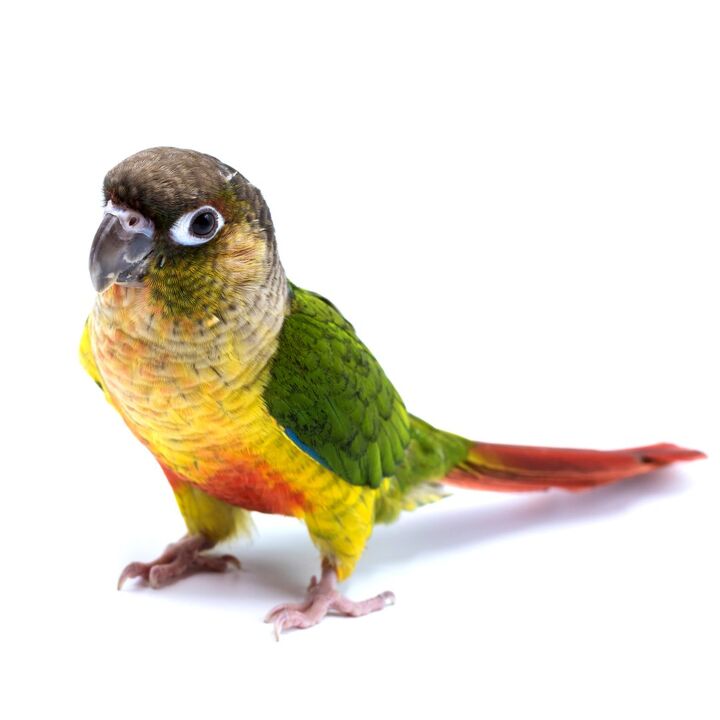
For such a small bird, the Green Cheeked Conure boasts various interesting details and bold colors, resulting in a striking and beautiful parrot. While the base color is green, it is crisscrossed with multiple shimmery hues. The top half of the head is bluish black, with a white collar that rings their neck. The thighs are light blue with red patches on the belly. The tips of the wings are prominently blue, and their long and graceful tail feathers are deep red. This majestic display of various patterns and color combinations makes this little conure a truly pretty bird that is certain to steal some looks.
Green Cheeked Conure displays a variety of striking colors, patterns, and combinations- these are some beautiful birds!
Care and Feeding
In their natural habitat, these parrots feed on a carefully selected diet of seeds, fruits, tree blossoms and agricultural products. To achieve this for your pet, a good commercial seed mix designed for conures is a great starting point. Regular and small doses of fresh fruit and vegetables are a mandatory addition and a source of vitamins and necessary proteins.
Health and Common Conditions
Don’t be fooled by their small stature and frail build. Conures are notoriously hardy and easily adapt to common conditions around the world. Their biggest weaknesses, though, are cold temperatures and neglect. Always try to provide enough sunlight, free space for flying and a good amount of attention. The basis of this is good hygiene – regular baths are a must if you want to avoid skin and feather disease. Make sure to replace stale food, provide fresh drinking water daily and baths a few times a week.
Despite its size, the Green Cheeked Conure is a resilient and healthy bird.
Personality & Behavior
Once you meet your conure pet a little bit better, you’ll quickly see how loveable they are and easy to care for, as well. With a high level of energy, and being pretty smart, these conures simply love to play. They will always regale you with their silly antics and funny gait. Don’t worry; they also have a cuddly, affectionate side. One of their favorite pastimes is hiding beneath the blankets, cuddling beside you and enjoying the warmth. So there’s no doubt that with their fun, playful but still affectionate nature, the Green Cheeked Conures make excellent pets and friends.
Photo credit: Ery Azmeer/Shutterstock; worachet jureuan/Shutterstock; Jordan Tan/Shutterstock




